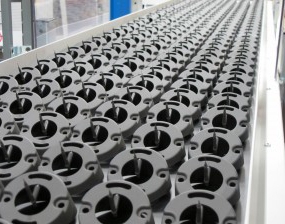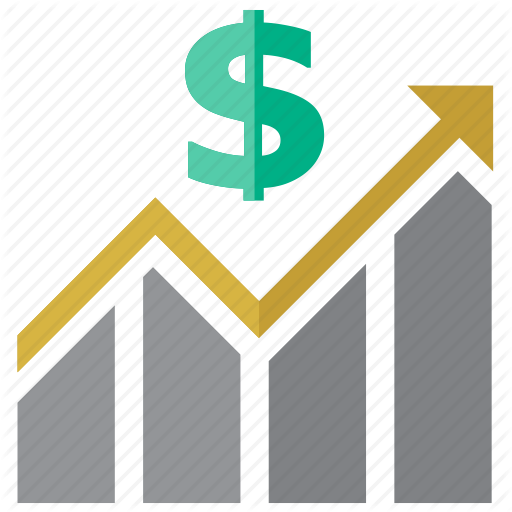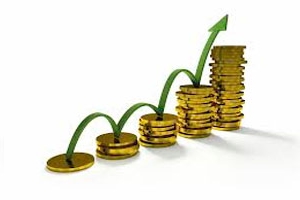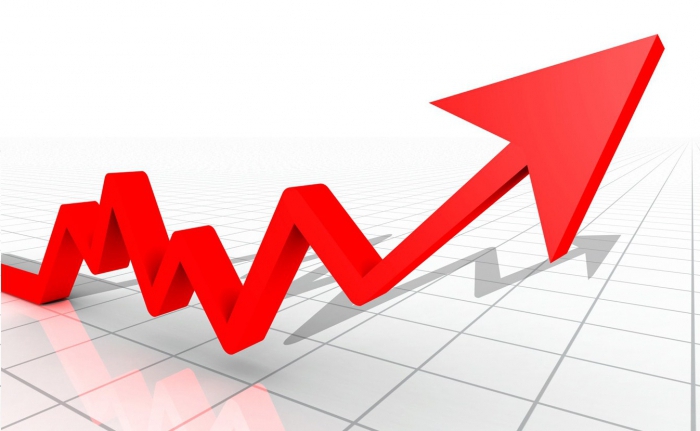The volume of production is an important economic indicator of business development. How to calculate it? What is the practical utility of knowing current production volumes? In what cases is it advisable to optimize it and by what methods can it be done?
Definition
What is the volume of production? This is the total number of pieces (or other units of measure - liters, tons, etc.) of a certain industrial product released over a certain period of time, or the dynamics of the output of products, expressed in labor or cost indicators. The practical value of this indicator has two main aspects.

Accounting feasibility
Firstly, this is the provision of statistics to internal corporate structures, for accounting, for investors or, for example, the state customer. In this case, the volume of production is information that is mainly for reference or analytical purposes. The relevant data may be important for making key decisions for the enterprise in the field of management, investment, contracting, etc.
Strategic feasibility
Secondly, in the economy there is the concept of "optimal volume of production." According to a common definition, it is an indicator that provides the enterprise with the conditions for fulfilling contracts and meets the priorities for business development (or the tasks set by the owner - a private person, state, municipality, etc.). The key criteria here are meeting deadlines, minimum costs, and the maximum level of product quality.
Volume analysis
We study the first direction of the practical application of this kind of information, as the volume of production. A statistical and analytical study of the relevant performance indicators of enterprises, if we talk about private business, can be aimed at informing about the real situation at the factory of investors, government agencies (mainly the Federal Tax Service). What owners of companies should pay attention to in this direction in the first place is the competent execution of relevant information.

Particularly strictly should be approached in such a question to documents relating specifically to interaction with tax authorities. So, figures related to the volume of production must be provided in accordance with standardized forms. So, for example, No. 1-P ("Quarterly reporting on the release of certain types of products"), No. 16 "(Movement of finished products"), etc.
Production units
Above, we noted that the volume of production of an enterprise can be expressed in physical terms (pieces, tons, etc.), labor or cost meters. If everything is clear with the first parameter, then what are the other two? Consider their features.
Valuation
As for the cost expression of the volume of production, the main criterion here is gross costs. They, in turn, depend on such indicators as labor intensity, resource intensity, and also the profitability of the goods. The production volumes in this case are expressed in selling prices and are fixed, if required by the financial statements, in the form of No. 1-P. VAT is usually not indicated.

Gross costs are a characteristic that implies the inclusion in the statistics of both finished goods and those that are at some stage of the conveyor (but at the same time some resources, labor, material, have already been spent on bringing them to a specific stage).
Labor assessment
As for labor assessment, here the volume of production is expressed, as a rule, in the number of hours spent on the production of goods by certain specialists, as well as in the salary of employees. As a rule, finished and incomplete product samples are included in the corresponding area of statistics, as well as in the case with the cost criterion.
What is the practical significance of calculating the volume of output of goods in labor terms? The fact is that working with cost indicators does not always give an objective idea of the state of affairs in the factory. The main reason is the structure of manufactured goods and their prices often change. The first may be due, as some experts believe, to the fact that the company may lack the necessary equipment or other necessary resources, as well as an objective increase in the cost of production. Thus, labor costs can be an indicator that complements the cost estimate of the cost of production of goods or acts as its alternative.

How to determine the volume of production in hours? One of the common formulas is as follows. The total number of each type of product is multiplied by the normalized time value allocated for the manufacture of one product.
If necessary, the indicators identified for the current year are compared with the figures of previous periods.
Note that the measurement of the volume of output of goods in watches has one significant drawback: using this method, it is quite difficult to take into account the direct content of labor functions and the complexity of the work in relation to the qualifications of specialists.
Production and Salary
In turn, a fairly effective measurement of output in wages is possible. Using this indicator, it is possible, in turn, to differentiate labor depending on the skill level of personnel and the job functions of specialists. Calculating the volume of output of goods in the salary is also quite simple. The total number of manufactured products (in kind) is multiplied by the established standard of salary per unit of goods.
In some cases, the analysis of the volume of production is supplemented by a different kind of calculation. Such as, for example, a study of the dynamics of shipment of goods, comparison of the identified figures with planned indicators, comparing them with previous periods. Another possible component of the analysis is quality. Also, in some cases, in the context of studying the volume of output, it is possible to study figures reflecting the sale of finished products. Such actions can be useful if, for example, the task is to calculate the percentage of fulfillment of contractual obligations of the company related to the supply of certain types of goods to consumers or partners.
Methods of studying the volume of production
How exactly can you use numbers that reflect indicators of the volume of production in physical, value or labor terms? Among Russian economists, a method such as comparison is widespread. So, for example, indicators of the current year and past years are compared. Another popular option is to reconcile the identified numbers with those contained in the production plan or in a contract signed by the company.
Form No. 1-P, which, as we noted above, is often used in accounting, contains a sufficiently large number of variables for conducting a comprehensive analysis of business performance. By comparing the numbers, in particular, it is possible to identify the dynamics of the output of goods, to calculate the growth rate of the enterprise.
Optimal Volume Calculation Methods
The second direction of the practical use of such an indicator as the volume of manufactured goods is the optimization of the enterprise from the point of view of the business model. How to determine the optimal volume of production? This can be done in several ways. In the Russian economic school there are two main ones. The first is based on work with gross indicators.
The second is a comparison of the figures belonging to the category of limit. In this case, calculations are carried out, as a rule, for each type of goods manufactured by the factory. It is also implied that the company seeks to maximize profits in the analyzed period. Another calculation factor: the optimal values for two parameters are revealed - the price and the actual volume of production. It is assumed that other elements of the factory remain unchanged.
Sales factor
One of the methods simultaneously calculates the volume of production and sales. In other cases, the condition is allowed that the total number of manufactured goods is equal to the number of samples sold. That is, the dynamics of sales does not matter. Whether or not to take into account the relevant criterion depends on the type of enterprise, the specifics of the business. For example, if we are talking about retail in the segment of consumer goods, then marketers, as a rule, nevertheless take into account such a factor as the dynamics of sales. If, for example, an enterprise assembles military equipment under an order in accordance with existing contracts, the pace of implementation is usually of secondary importance.
The practice of calculating the optimal volume: accounting for implementation
We noted above that the practical utility of figures reflecting the volume of output of goods can be expressed in the application of relevant indicators simultaneously with those that relate to the results of implementation. When calculating the optimal volume of production, we can also pay attention to this criterion. For example, an implementation indicator can be identified, the achievement of which will ensure zero profit or one that suits the management of the company in terms of profitability. In some cases, it is also possible to determine the maximum value of profit in relation to the sale of goods and the volume of production. Which in most cases will be optimal.

Consider a simple example. The company produces tennis balls.
We agree that the selling price of each is 50 rubles.
Gross costs for the production of 1 unit - 150 rubles., 5 units - 200 rubles., 9 units - 300 rubles., 10 units - 380 rubles.
If the company sold 1 ball, then negative profitability minus 100 rubles.
If 5, then positive, plus 50 rubles.
If 9, then there is also profitability, plus 150 rubles.
But if the company sold 10 units, then the profit will be only 120 rubles.
Thus, the optimal production of tennis balls is 9 units. Of course, given the criteria regarding gross costs. The formula for their determination can vary greatly depending on the specifics of production. Costs for the release of additional units of goods, as a rule, are reduced per unit. However, the dynamics of their reduction is not always proportional to the number of manufactured products.
Limit indicators
How to determine to what point it is advisable to increase production? Here the method will help us, which we also noted above. It involves the study of limit indicators. Economists distinguish two of their main types - these are costs and income.
The basic rule that business is recommended to adhere to is: if the marginal amount of income (per unit of manufactured product) is higher than the maximum cost, then you can continue to increase production. But in practice, profitability factor usually plays an important role in business. That is, the corresponding excess of income over costs should provide, as an option, the solvency of the company on loans.Zero profit in this case does not suit the company, since it still pays some interest to the bank.
Production growth and new employees
Is it possible to ensure cost-effective growth in production by attracting an increasing number of employees? Not always. The fact is that the inclusion of a new specialist in the work does not necessarily mean that the result of his work will be any definite increase in the volume of output of goods. If, for example, an enterprise starts hiring more people, but does not pay due attention to the modernization of fixed assets, the average labor productivity is likely to decline. And therefore, an increase in the volume of production will not be commensurate with the growth in the number of employees.

However, the imbalance between the dynamics of attracting new employees and the total number of goods produced by the company is not always accompanied by a drop in business profitability. It is quite possible that the profit of the enterprise upon the increase in the staff will nevertheless increase, and the costs will remain unchanged (or increase slightly). This is real if, for example, the demand in the market increases, and after it, probably, the price of the goods. The company will be able to optimally provide it by increasing the staff by several people.

A scenario that is quite common in business, reflecting the dependence of the optimization of indicators of the volume of output of goods on the number of employees employed at the enterprise — a gradual decrease in the cost of production per unit of goods. And after reaching a certain number of manufactured units of the product - the growth of the corresponding indicator.
The cost of production of goods that precedes the transition (from the moment of increasing or decreasing the number of manufactured units of the product) dynamics to growth or, conversely, to decrease, is called marginal. Changing the volume of production up or down, therefore, may be impractical, based on the achievement of the lowest cost indicators with the current dynamics of output.








